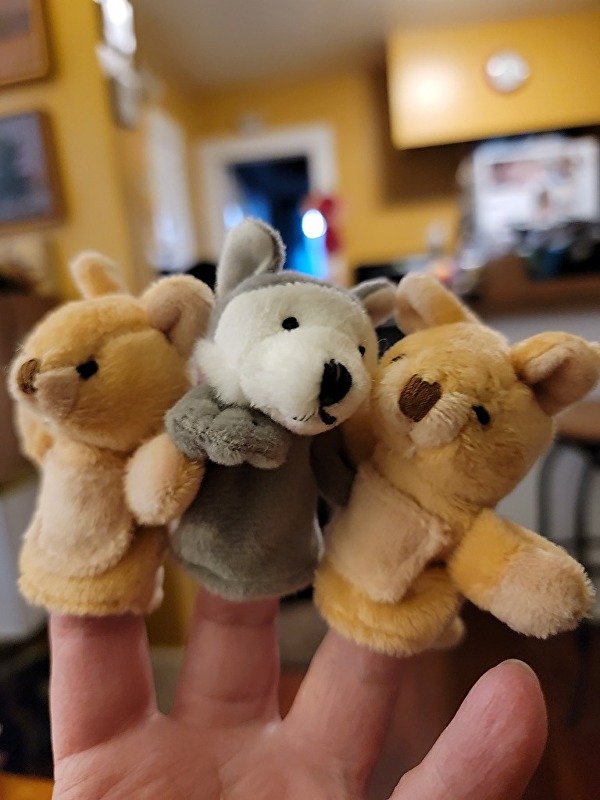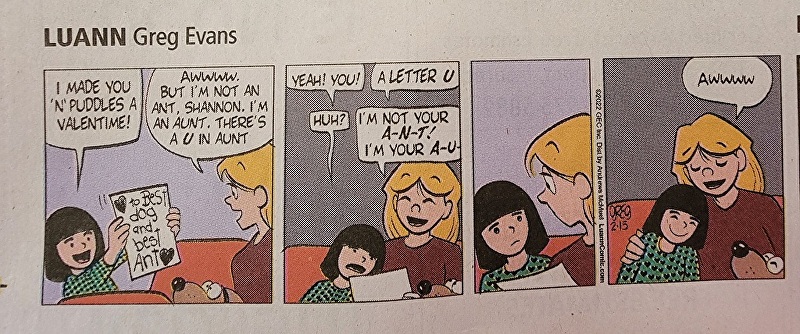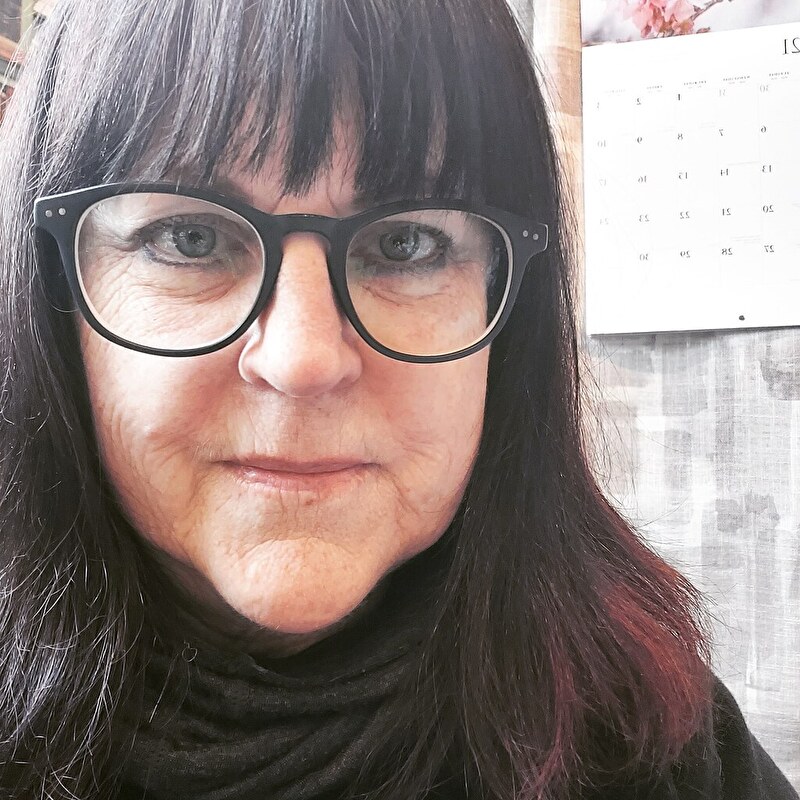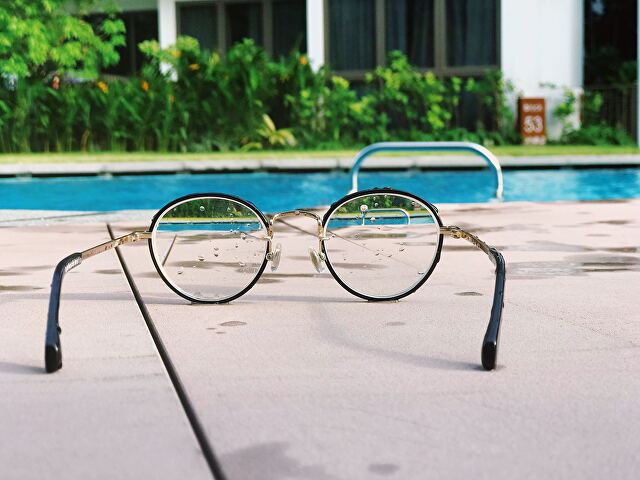FineArtViews Newsletter|Saturday, March 2, 2019|Issue 3407
This post is by Luann Udell, regular contributing author for FineArtViews. She’s blogged since 2002 about the business side–and the spiritual inside–of art. She says, “I share my experiences so you won’t have to make ALL the same mistakes I did….” For ten years, Luann also wrote a column (“Craft Matters”) for The Crafts Report magazine (a monthly business resource for the crafts professional) where she explored the funnier side of her life in craft. She’s a double-juried member of the prestigious League of New Hampshire Craftsmen (fiber & art jewelry). Her work has appeared in books, magazines, and newspapers across the country and she is a published writer.
LET ME COUNT THE WAYS: Why Didn’t That Gallery Take My Work??
By Luann Udell
Remember, gallery owners are just customers with stores.
Years ago, I wrote an article listing all the reasons why a gallery might not accept your work. Well. Not all the reasons. Because I think more are being born every minute….
Why did I do this? Because at some point in our art career, when we approach a gallery, we will probably face rejection. And when that happens, we struggle to figure out why.
Many of us will blame the gallery. Some of us will blame ourselves. A very few of us might have the courage to actually ask the gallery. (They may or may not give you an honest answer, but it’s worth a try!)
1. Your work isn’t up to snuff.
2. Your work is really good, but not their preferred medium.
3. Your work doesn’t fit in with their current inventory.
4. Your work looks too much like work in their current inventory.
5. Your work is overpriced.
6. Your work is under-priced
7. Your work is fine, and well-priced, but will not appeal to their clientele.
8. They like your work, but they don’t like you.
9. They like you, but they don’t like your work.
10. They don’t like you or your work.
11. They can tell you don’t like them.
12. They’re having a really bad day.
13. You’re having a bad day, and it shows.
14. You dropped in unannounced, and rudely assumed they would drop everything to look at your work. (There are ways to drop in and not rudely make such an assumption, but you have to have your script ready.)
15. You are too meek when it comes to talking about your work.
16. You are too arrogant when it comes to talking about your work.
17. You try to establish your creds by dissing their other artists.
18. Your color palette is too dull.
19. Your color palette is too shocking.
20. You’re already in every other gallery in town.
21. You don’t have an established reputation, and they only take the same artists.
22. Your work is all over the map-not a cohesive body of work.
23. Your work is all the same-no variety.
24. You are high-maintenance. (I have watched this in action, and it is truly off-putting!)
25. They can tell you expect them to handle everything, from sales to marketing and everything in-
between. So you don’t have to do anything to grow and connect with an audience.
26. They aren’t doing well, and they may even be closing up shop soon.
27. They aren’t dealing with their artists honestly, and they know your partner is a lawyer.
28. Your work is controversial.
29. Your work is technically good, but has no soul.
30. They know nothing about your medium.
31. They hate your medium.
32. They love your medium, but they are only looking for X medium.
33. They love your medium, but they already carry too many works in it.
34. They love your medium, but they don’t love you.
35. They know your work is already carried by their biggest competitor.
36. They don’t take local artists.
37. They only carry local artists.
38. They used to carry your work because you used to be a local artist, and then you moved away, and all their customers want to know why they’re carrying an artist on the other side of the country.
39. Your work is too fragile-breaks easily, can’t be packed or shipped, etc.
40. Your work is too big.
41. Your work is too small, too easy to shoplift.
42. Your work is too hard to display-too big, too heavy, has lots of loose parts, etc.
43. Your work is too trendy.
44. Your work is passe.
45. Your work is craft, not “fine craft”.
46. Your work is fine craft, not art.
47. Your work is art, not craft. (Yup, I was disqualified for this once!)
48. Are you sensing a pattern here?
There are as many reasons why a gallery won’t take your work as there are stars in the sky. Or at least as many reasons as there are galleries.
Do some of these reasons sound familiar?
They should. Many of these reasons are the same reasons our potential customers don’t/won’t buy our work.
We often imbue gallery owners/managers with more power than our customers.
In fact, they may have more expertise, more experience, more clout. They may be fair, and kind, and compassionate, too. But they are still just human beings, like us, prone to prejudices, errors in judgment, egomania, and even envy. In fact, a fellow artist told me years ago:
“Galleries are just customers with stores.”
I have heard many variations on these reasons in my art career. When I first started approaching galleries, I was pretty fearless. I was starting in the middle of nowhere, and figured any progress would get me somewhere. I didn’t offend easily, and I quickly saw that a gallery’s refusal was not to be taken personally. (I think I sensed the “customers with stores” thing already. But then, I forgot.)
Every encounter with a gallery was a learning experience. I realized when someone seemed mean, it was more about them than me. My work may or may not be “good enough”, etc. But the bottom line was, it just wasn’t right for them, period.
Am I offended when a visitor doesn’t buy my work? Or criticizes it?
To the first, absolutely not. Not everyone is our customer. We all know that, and yet, it can still feel daunting.
The latter, yes, it’s offensive. But again, someone who feels compelled to complain to me about my work is revealing more about who they are. I can choose to pick that up and carry that anger, that embarrassment. Or I can choose to let it go, and find my true “next” customer.
These reasons are similar for group shows, too. A curator might want variety in every single piece in the show. In which case, if your work looks too much like what they’ve already accepted, they may not accept it.
But if they are creating a cohesive show with light-colored contemporary pottery, and your work is pit-fired and dark-colored, you might not get in.
I share these “reasons why” not to discourage you, but to encourage you.
I want you to persevere with the work of your heart. I want you to make the work that only you can make.
I want you to tell the story with your art that only you can tell.
I want you to make the work that brings you joy, and creates a powerful place for you to be in the world.
Not every person is our customer (yep, I’m saying it again!) and not every gallery is our gallery.
Every minute we spend being angry, hurt, disenfranchised by someone else’s opinion of us, our work, our medium, is a minute wasted.
We could use that time and energy to find our real customers, including the “ones with stores.”
I know that’s easy to say. Disappointment is the curse of all creatives. Books get rejected, Oscars are awarded to the “safe” choices, artists are passed over. I get it.
Just remember that we are dealing with fellow human beings. Some are wise and loving and respectful and evolved. Others? Not so much. We all have our preferences, especially petty ones!
Here’s my last example: When I approached my first gallery, a non-profit, there were two managers. One oversaw the fine craft area, the other the fine art area. Being a fiber artist, I approached the fine craft person with my wall hangings first.
I was roundly rejected as having “an immature design aesthetic” and “an illogical composition style.” They went on for quite a while, lamenting the fact that I would never have a “real” art career. They suggested I make smaller pieces and sell them as pins. (I am not making this up.)

Well, this is certainly small enough to be a pin!
I was baffled, but feeling too strong to feel threatened. It was obvious this person had issues, and I knew there was something about my work that threw them off. I thanked her and left with my work.
A few months later, our town of Keene had its annual “art walk.” Participating business venues exhibited the work of local artists in their windows for a week. A very popular and fun event!
A friend told me afterwards that a very well-known (okay, famous!) artist, who was a friend of hers, saw my work while they were perusing the event. He stopped in his tracks when he saw my work. He said something amazing I can’t remember (more on this later), something to the effect that he loved it, it was fresh, it was different, it was unique, it was powerful, and it was beautiful.
Anya said, “You don’t think the design aesthetic is immature?” (His response was literal “wtf”, and he was baffled until she shared how my work had been received a few months earlier. His next response? “Wtf is wrong with them?!” The venue, not me.)
Cut to a couple years later. My fiber work had appeared in several exhibitions at the same facility, and the art manager asked me to become one of their permanent exhibitors.
A few days later, as I walked through the craft gallery with my work, that very same person who’d rejected me roundly ran up to me, saying, “I want to talk with you! Those are craft, not art! I want to carry those in my section!”
I told her politely I was there by invitation, but appreciated her enthusiasm. And kept walking to the art manager’s office.
No, my work wasn’t significantly different-same style, same techniques, same colorways, same artifacts. The only difference was, I believe, my work was becoming better known.
My point is, we are hard-wired to pay attention to bad stuff. “Bad stuff” implies a threat, danger, and so we instinctively tune in to it to keep ourselves safe. (Which is why, as I suggested above, all these years later, I can remember the mean things that person said, and can’t quite remember the lovely things that famous artist said.)
If we let this dominate our lives, if we pay too much attention to those who would take us down, we will let them–help them–crush our spirit.
Try not to agonize about the gallery that didn’t work out. Try not to take it personally when someone else wins that prize. Let go of the people who don’t appreciate our art, or our medium, or our subject matter, or anything else people gritch about.
Yes, it’s good to keep in mind we can always do better with our artwork. Our art biz has an arc similar to life. As we know better, we strive to do better, and be better. It’s the same with our art.
Take all the energy generated by disappointment and failure, and channel it right back into the work of your heart.
And I hope, someday, you, too, get a chance to prove your detractors dead wrong!
You can subscribe to the Fine Art Views newsletter here.

























